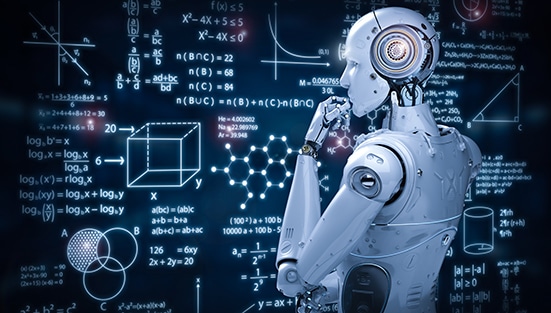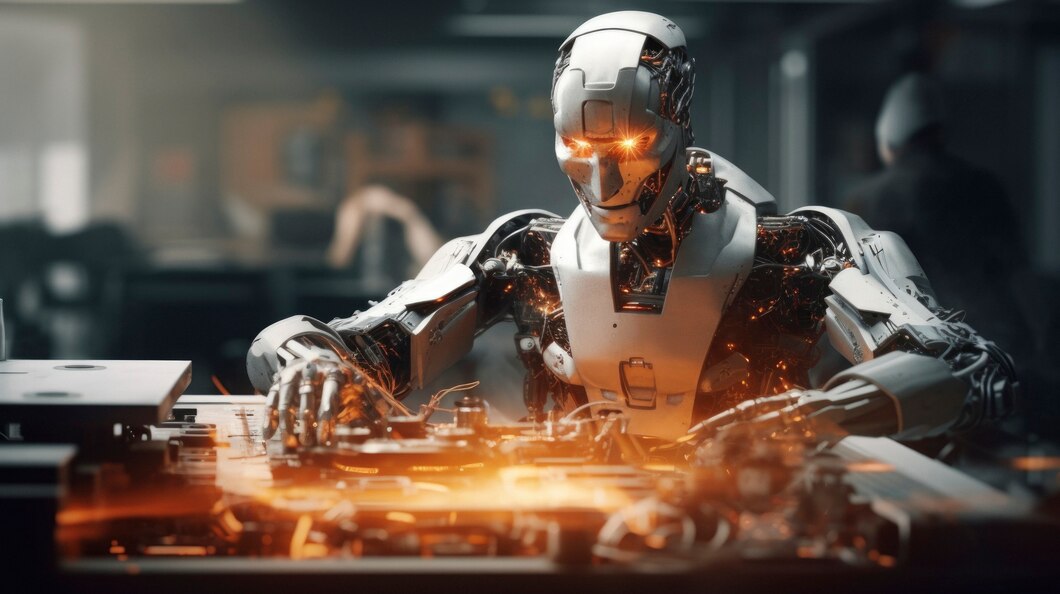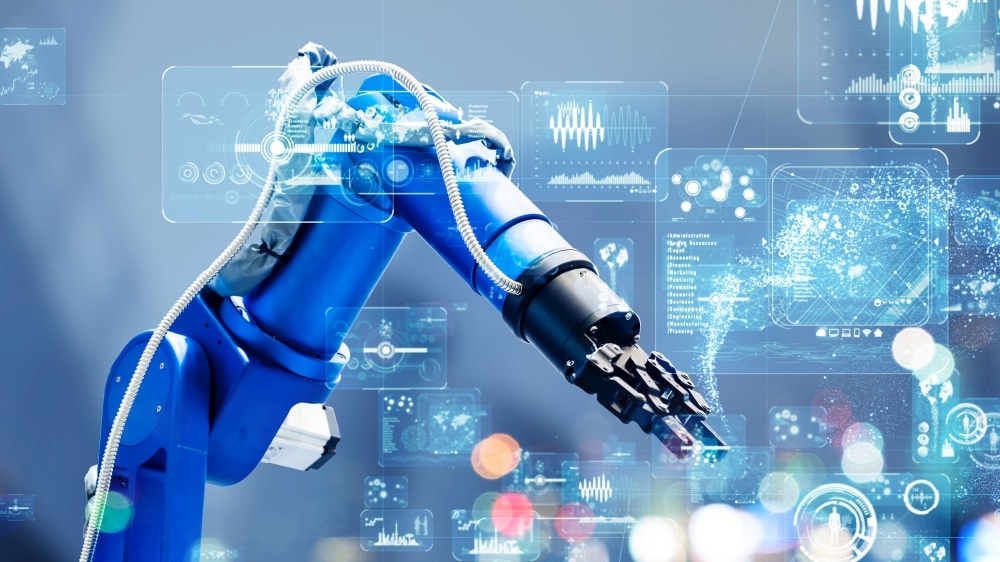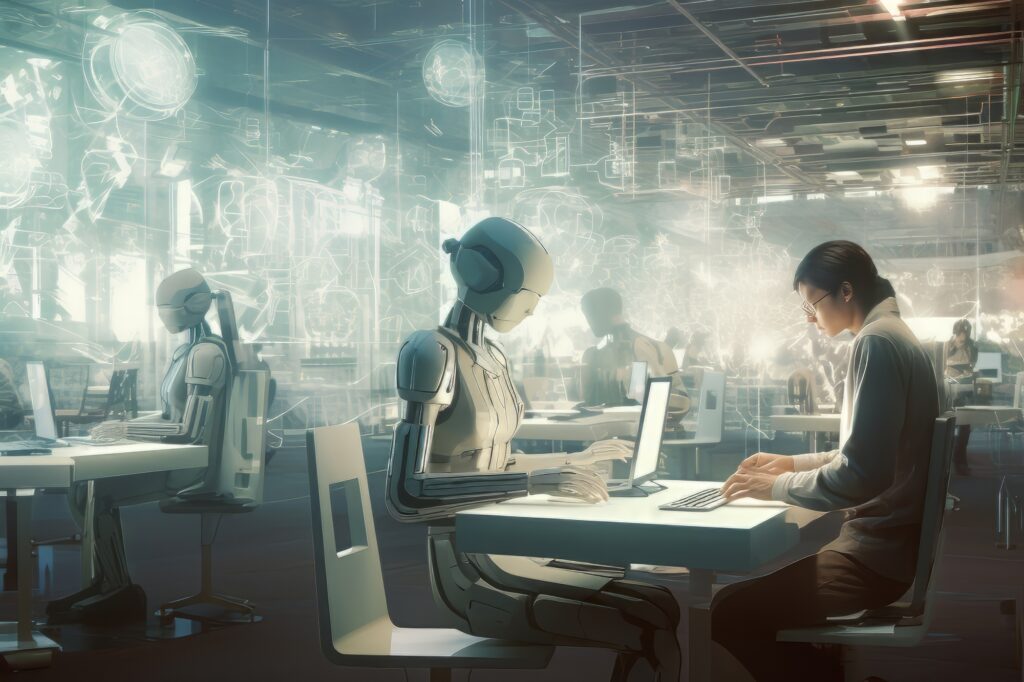Robotics technology, once the realm of science fiction, has now emerged as a transformative force that is reshaping industries, economies, and societies. Robotics encompasses the design, construction, operation, and use of robots, which are automated machines capable of performing tasks traditionally carried out by humans. As robotics technology advances, it has the potential to revolutionize every facet of modern life—from manufacturing to healthcare, agriculture to logistics, and beyond.
In this article, we will explore what robotics technology is, how it is advancing, and how it is shaping the future across various sectors. We will also dive into frequently asked questions (FAQs) to provide a more in-depth understanding of this cutting-edge technology.
Key Takeaways
- Robotics technology refers to the design and use of robots to perform tasks autonomously or semi-autonomously, utilizing sensors, actuators, and control systems.
- Key sectors benefiting from robotics include manufacturing, healthcare, agriculture, logistics, transportation, and space exploration.
- Future potential of robotics includes improving efficiency, reducing labor costs, enabling precision tasks, and transforming industries like healthcare, logistics, and agriculture.
- Challenges in robotics development include high costs, technical limitations, and ethical concerns, but innovations continue to push the field forward.
- Collaborative robots (cobots) working alongside humans are becoming a critical aspect of modern robotics, enhancing productivity while maintaining worker safety.
What is Robotics Technology?
Robotics technology refers to the application of robotics systems that include machines (robots) designed to perform specific tasks autonomously or semi-autonomously. These robots can be programmed to carry out functions ranging from simple repetitive activities to highly complex tasks that require advanced decision-making and adaptability.
The key components of robotics technology include:
- Sensors: Used for detecting environmental factors such as distance, temperature, or motion.
- Actuators: Mechanisms responsible for movement, enabling robots to interact physically with their environment.
- Control Systems: Software and algorithms that dictate the actions and movements of the robot based on data from sensors.
- Power Supply: The source of energy, often through batteries or external power systems, required to operate the robot.
- Artificial Intelligence (AI) and Machine Learning (ML): Technologies that enable robots to make decisions, learn from data, and adapt to their environment.
Robotics systems can be classified into different categories based on their functionality:
- Industrial Robots: These are the most common and are used in manufacturing for tasks like assembly, welding, painting, and material handling.
- Service Robots: Designed to assist humans, these robots are used in healthcare, hospitality, and other service industries.
- Autonomous Robots: These robots operate independently without human intervention, such as autonomous vehicles or drones.
- Humanoid Robots: Robots that resemble the human body and can perform tasks similar to human activities.
- Collaborative Robots (Cobots): Robots designed to work alongside humans in a shared workspace, making automation safer and more efficient.
How Robotics Technology is Shaping the Future

Robotics technology is not just about building machines that can perform tasks. It is an evolving field that combines multiple disciplines such as artificial intelligence, mechanical engineering, control systems, and computer science. The rapid progress in robotics is already having profound effects across several key sectors. Let’s examine some of these sectors and how they are being transformed by robotics technology.
1. Manufacturing and Automation
In the manufacturing industry, robotics has been a game-changer. Robots have been used for decades in manufacturing for repetitive tasks like assembly line work, painting, and welding. However, the latest innovations in robotics technology, especially in industrial robots and collaborative robots (cobots), are taking automation to new heights.
Today, robots are being used to perform precision tasks such as micro-assembly, quality inspection, and packaging, which were once done manually. Furthermore, cobots are designed to work alongside human operators, enhancing productivity while ensuring safety. This collaboration helps companies reduce operational costs, improve quality control, and increase throughput.
The Future Impact:
- Increased efficiency and accuracy
- Lower labor costs and improved safety
- Shorter production times and reduced waste
2. Healthcare and Surgery
Healthcare is another field where robotics technology is making significant strides. Surgical robots, such as the da Vinci Surgical System, allow doctors to perform minimally invasive surgeries with greater precision and control. These robots are equipped with advanced sensors and cameras, enabling surgeons to view intricate details and make precise movements that would be difficult with human hands alone.
Additionally, robots are being used for tasks such as drug delivery, rehabilitation, and even elderly care. Autonomous robots are also being developed to assist in patient monitoring, medication administration, and other hospital functions.
The Future Impact:
- Minimally invasive procedures with quicker recovery times
- Increased accessibility to healthcare in remote areas
- Enhanced care for elderly and disabled individuals through assistive robots
3. Agriculture and Farming
Robotics technology is revolutionizing agriculture by automating tasks such as planting, harvesting, weeding, and crop monitoring. Autonomous tractors and drones are already being used to perform tasks that were once manual, allowing farmers to increase productivity and reduce labor costs.
Robots can also assist in monitoring soil health, detecting pests, and applying fertilizers with great precision. This not only leads to increased efficiency but also promotes sustainable farming practices by minimizing the use of pesticides and fertilizers.
The Future Impact:
- More efficient and sustainable farming practices
- Reduced reliance on human labor
- Improved crop yields and food security
4. Logistics and Supply Chain

In logistics, robotics technology is playing a pivotal role in automating the movement of goods. Autonomous robots and drones are being used in warehouses to pick and pack items with speed and accuracy. For example, Amazon’s fulfillment centers utilize robotic systems to transport goods from storage to packaging stations, significantly reducing human labor and increasing efficiency.
Similarly, autonomous vehicles and drones are being developed for delivery services. These technologies are expected to reduce delivery times and costs while improving the overall customer experience.
The Future Impact:
- Faster and more cost-effective deliveries
- Increased safety and efficiency in warehouses
- Reduction in human errors and labor costs
5. Autonomous Vehicles and Transportation
One of the most exciting developments in robotics technology is the rise of autonomous vehicles. Self-driving cars, trucks, and drones are transforming the transportation sector by making travel safer, more efficient, and accessible.
Autonomous vehicles use advanced robotics systems that integrate sensors, cameras, and AI to navigate roads, detect obstacles, and make real-time decisions. This technology promises to reduce traffic accidents, improve fuel efficiency, and provide mobility solutions for people with disabilities or those unable to drive.
The Future Impact:
- Reduction in traffic accidents and fatalities
- Increased efficiency in freight and delivery services
- Greater mobility for individuals with disabilities
6. Space Exploration
Robotics technology is also pivotal in space exploration. Robots like NASA’s Mars rovers (Curiosity and Perseverance) are able to explore other planets, gather data, and perform experiments remotely, which would be impossible for humans in these environments.
In the future, robotics could be used to establish colonies on other planets, repair satellites in orbit, or even mine asteroids for valuable resources.
The Future Impact:
- Expansion of human presence in space
- Safer and more efficient space exploration
- New opportunities for scientific discovery
Certainly! Below are more advanced or specialized terms related to robotics technology that you might find useful in the context of discussions on this topic:
Key Terminology in Robotics Technology
1. Autonomous Systems
- Definition: Systems capable of performing tasks without human intervention using sensors, algorithms, and decision-making capabilities. Examples include autonomous vehicles, drones, and factory robots.
2. Actuation
- Definition: The mechanism by which a robot moves or performs actions. Actuators can include electric motors, pneumatic actuators, hydraulic actuators, etc.
3. AI-Driven Robotics
- Definition: Robots powered by Artificial Intelligence (AI) that enable them to learn from data, make decisions, and adapt to new environments without explicit programming for each scenario.
4. Cognitive Robotics
- Definition: A subset of robotics that incorporates cognitive computing, allowing robots to process information and make decisions based on reasoning, knowledge, and experience.
5. End-Effector
- Definition: The tool or device attached to the end of a robotic arm that performs specific tasks, such as a gripper, welding torch, or camera.
6. SLAM (Simultaneous Localization and Mapping)
- Definition: A technique used by robots to map their environment and track their location within that environment in real-time, essential for autonomous navigation.
7. Human-Robot Interaction (HRI)
- Definition: The study and design of interfaces that allow humans and robots to interact, collaborate, or co-exist in the same environment. HRI is critical for designing robots that can work alongside humans safely.
8. Swarm Robotics
- Definition: A field of robotics inspired by natural swarms, such as insects or birds. It involves the use of many small, simple robots working together to perform a complex task that would be difficult for a single robot.
9. Robotic Process Automation (RPA)
- Definition: The use of software robots or “bots” to automate repetitive tasks in business processes. While not “robots” in the traditional sense, RPA is integral to digital transformation.
10. Robotic Vision

- Definition: The use of cameras and imaging systems, along with algorithms, to allow robots to perceive their environment. This is essential for tasks such as object recognition, navigation, and inspection.
11. Kinematics
- Definition: The study of motion without considering the forces that cause it. In robotics, kinematics involves analyzing the movement of robot parts, such as arms and legs, to achieve desired actions.
12. Mechatronics
- Definition: An interdisciplinary branch of engineering that integrates mechanical, electrical, and computer engineering to design and create smart systems and robots.
13. Teleoperation
- Definition: The operation of robots from a distance using remote control or communication. It is commonly used in space exploration, bomb disposal, and deep-sea exploration.
14. Reinforcement Learning (RL)
- Definition: A type of machine learning where robots learn by interacting with their environment and receiving feedback (rewards or penalties) based on their actions, eventually optimizing their behavior.
15. Soft Robotics
- Definition: A branch of robotics that deals with robots made from flexible, deformable materials, as opposed to traditional hard robots. Soft robots are often used in delicate environments, such as medical applications or handling fragile objects.
16. Biomechanics in Robotics
- Definition: The study of the mechanics of the human body applied to the design of robotic systems that mimic human movements. It plays a significant role in designing prosthetics and exoskeletons.
17. Telerobotics
- Definition: A form of remote-controlled robotics where the operator has direct control over the robot’s actions through feedback mechanisms, typically used in hazardous or inaccessible environments.
18. Actuator Feedback Loop
- Definition: A system in which sensors provide real-time data to control the movement of actuators, ensuring that robots perform tasks with high precision.
19. Robot Operating System (ROS)
- Definition: An open-source software framework used by developers to design robot applications. ROS provides tools and libraries for building complex robotic systems and integrating sensors, actuators, and AI algorithms.
20. Robotic Skin
- Definition: Flexible and adaptive materials designed to mimic the functions of human skin. Robotic skin allows robots to sense touch, pressure, temperature, and even texture, improving interaction with the environment.
21. Autonomous Mobile Robots (AMR)
- Definition: Robots that are capable of navigating their environment independently, using onboard sensors, mapping technology (like SLAM), and decision-making algorithms.
22. Path Planning
- Definition: The process of determining the best route for a robot to follow in a given environment while avoiding obstacles and optimizing for efficiency.
23. Adaptive Control
- Definition: A type of control system used in robots where the robot adjusts its behavior based on changing conditions in its environment, such as variations in terrain or load.
24. Robotic Prosthetics
- Definition: Artificial limbs and body parts designed using robotic systems to mimic the functionality of human anatomy, often equipped with sensors and actuators to provide real-time control and sensory feedback.
25. Robot Localization
- Definition: The process by which a robot determines its position relative to its surroundings or a known map, often using a combination of sensor data and algorithms.
26. Mobile Manipulators
- Definition: Robots that combine mobility (such as wheels or legs) with the ability to manipulate objects (such as arms or grippers). These robots are used for tasks such as warehouse automation or even surgical assistance.
27. Augmented Reality (AR) and Robotics
- Definition: The integration of AR with robotics to enhance robot perception or assist humans in controlling robots. AR can provide real-time overlays of information to guide human-robot collaboration.
28. Robotic Dexterity
- Definition: The ability of a robot to manipulate objects with precision, similar to the dexterity of a human hand. This includes tasks like grasping, assembling, and handling objects with different shapes and textures.
29. Humanoid Robotics
- Definition: Robots that are designed to resemble human beings in terms of both appearance and behavior. Humanoid Robots are capable of walking, talking, and performing tasks that typically require human-like cognition and dexterity.
30. Wearable Robotics (Exoskeletons)
- Definition: Devices worn on the body that augment or enhance human movement. These systems are typically used to assist with mobility, especially for individuals with disabilities, or to augment strength and endurance in industrial settings.
Also Read : What Are The Key Elements Of A Strong Network Security Plan?
Conclusion
Robotics technology is undeniably one of the most transformative forces of the 21st century. From enhancing manufacturing efficiency to revolutionizing healthcare and agriculture, robots are increasingly becoming an integral part of everyday life. As we look toward the future, we can expect robotics to continue pushing boundaries and unlocking new possibilities in a wide array of industries.
With its ability to improve productivity, enhance safety, and create new opportunities, robotics technology is poised to shape not just our industries but our entire way of life.
Frequently Asked Questions (FAQs)
What are the benefits of robotics technology?
Robotics technology offers numerous benefits, including increased efficiency, reduced labor costs, improved accuracy, and enhanced safety in various industries. It also helps in reducing human error, performing hazardous tasks, and increasing productivity.
How are robots controlled?
Robots are controlled through a combination of sensors, control systems, and software. Depending on the robot’s purpose, it can be operated autonomously (using AI and machine learning algorithms) or manually through remote control.
Will robots replace human jobs?
While robots can replace certain manual or repetitive jobs, they also create new opportunities in fields like robotics programming, maintenance, and design. In many cases, robots work alongside humans, enhancing productivity rather than replacing workers entirely.
What is the difference between industrial robots and service robots?
Industrial robots are primarily used in manufacturing environments for tasks like assembly, welding, and painting, whereas service robots are designed to assist humans in non-industrial settings, such as healthcare, hospitality, or personal assistance.
How does robotics improve healthcare?
Robotics enhances healthcare by enabling minimally invasive surgeries, improving precision in medical procedures, assisting with patient care, and supporting rehabilitation efforts. Robotic systems also enable telemedicine, which makes healthcare more accessible, especially in remote areas.
Can robots learn and adapt to their environment?
Yes, robots equipped with AI and machine learning algorithms can learn from their environment and adapt to new situations. For instance, autonomous robots can improve their performance over time based on data and experience.
What are the challenges of developing robotics technology?
Challenges include high development costs, technical limitations, ethical concerns, safety issues, and the integration of AI with robotics systems. Additionally, robots may face difficulties in unstructured environments, requiring advanced algorithms and sensors to overcome these challenges.




